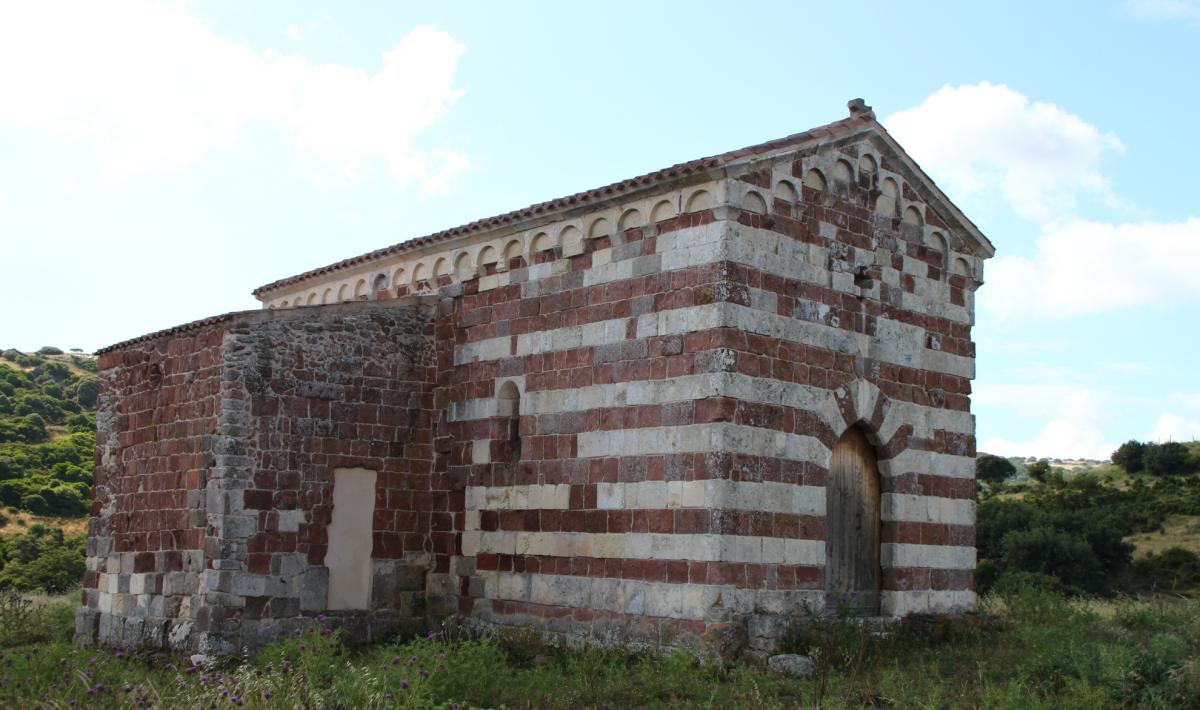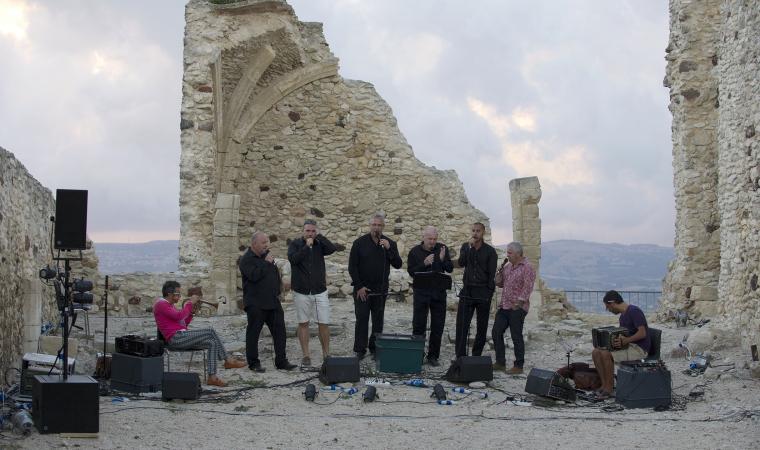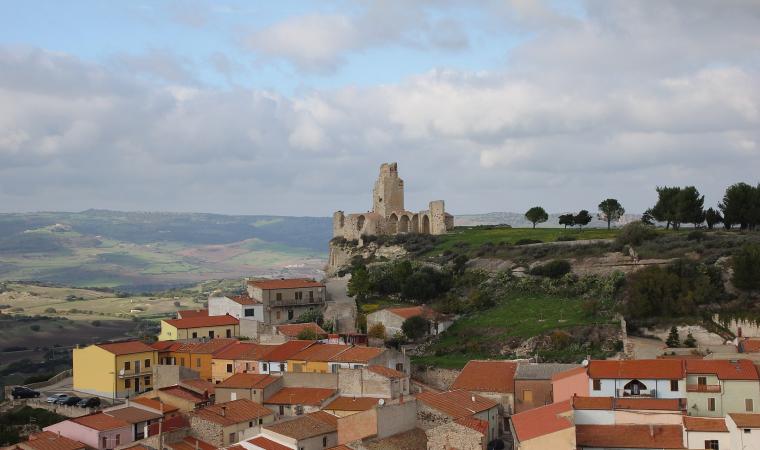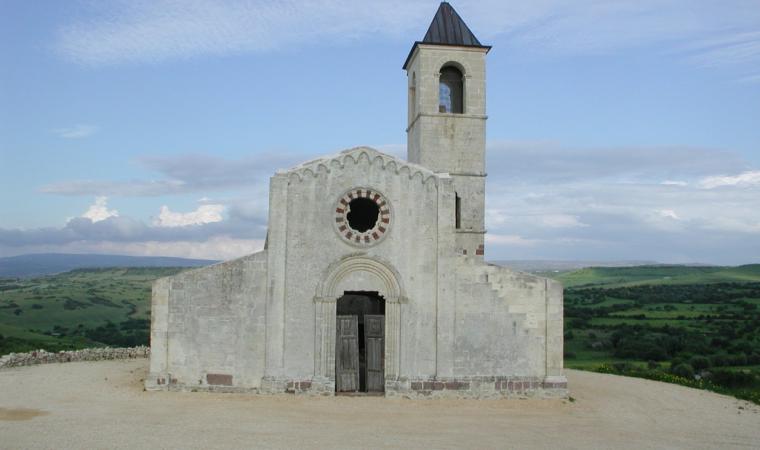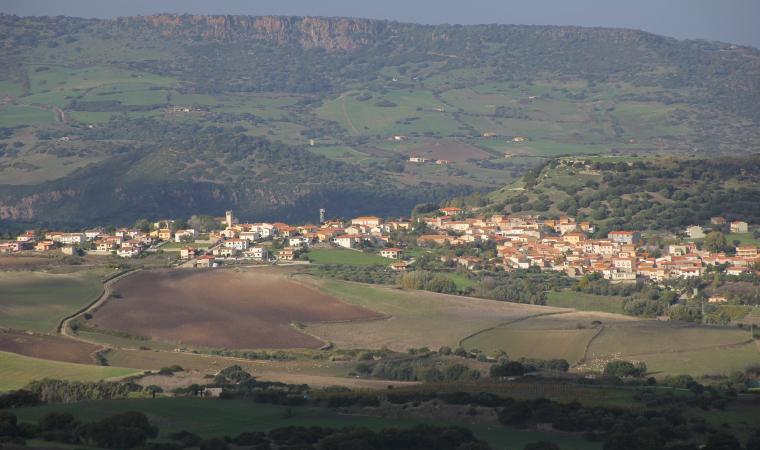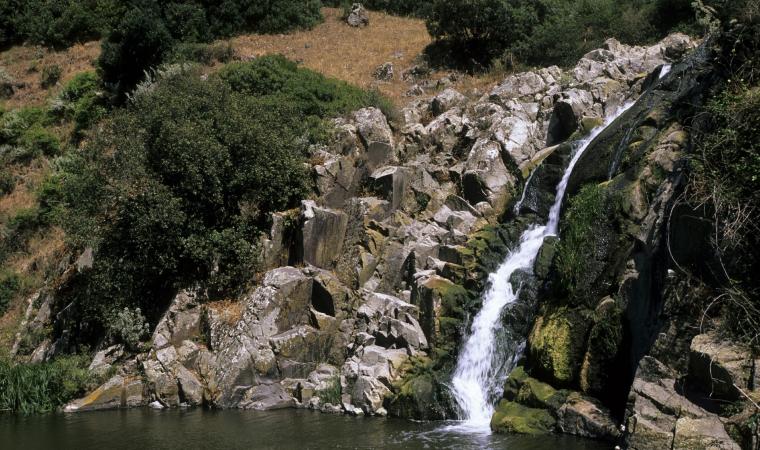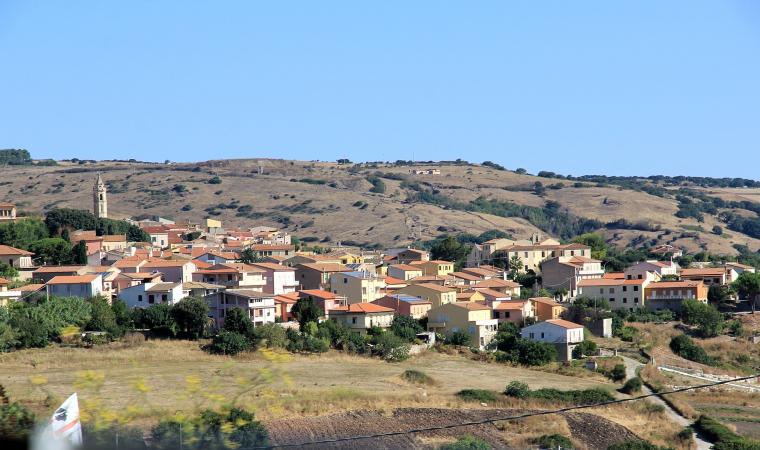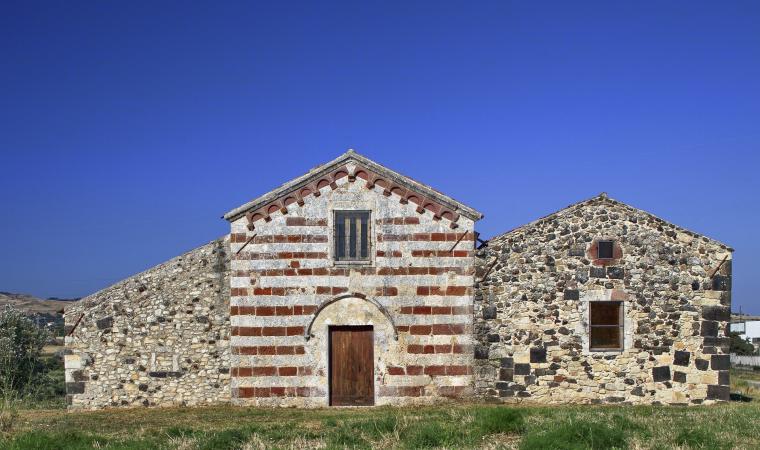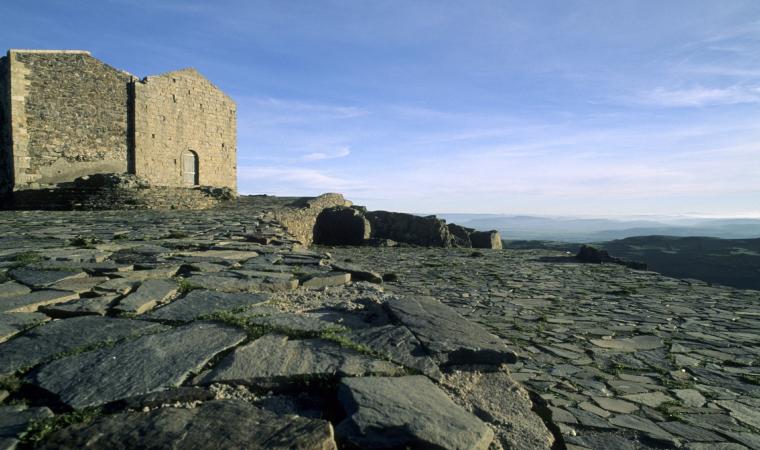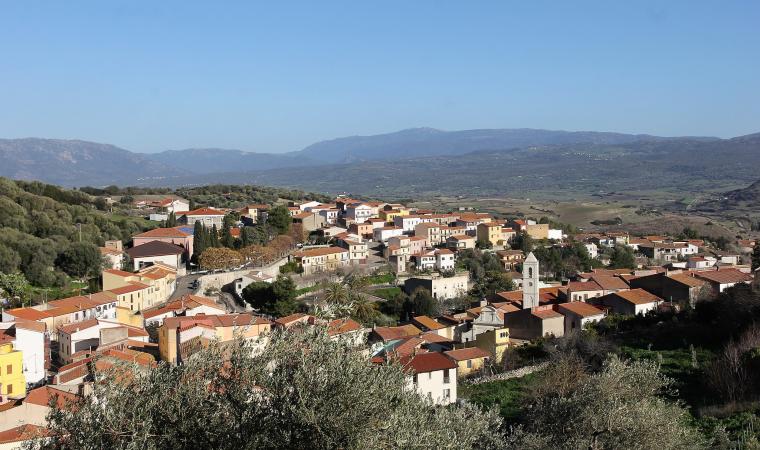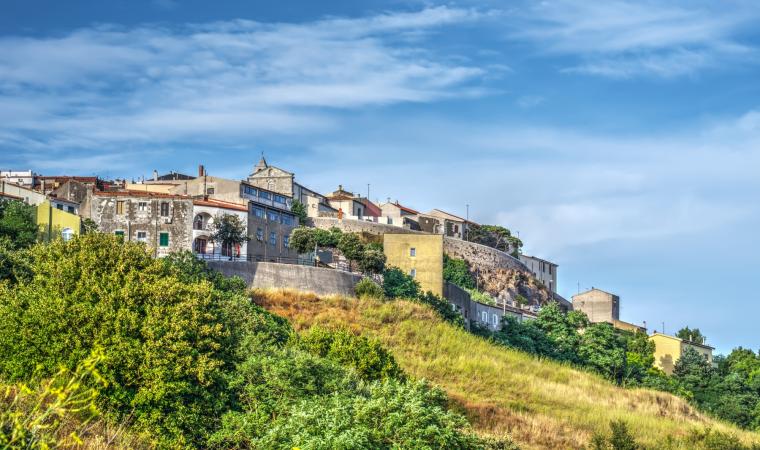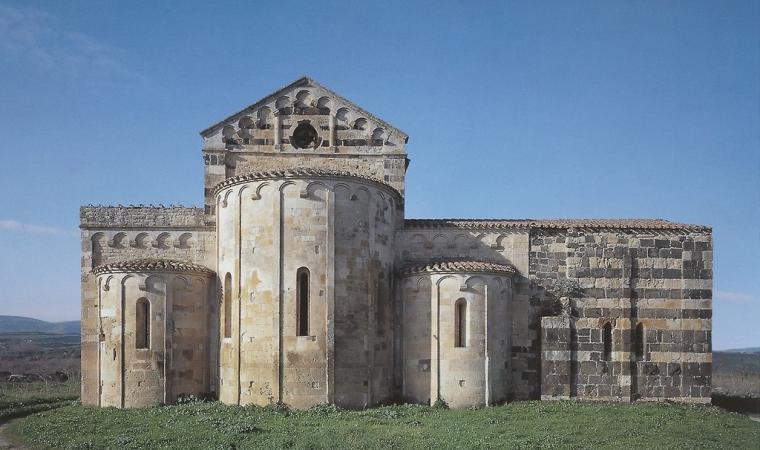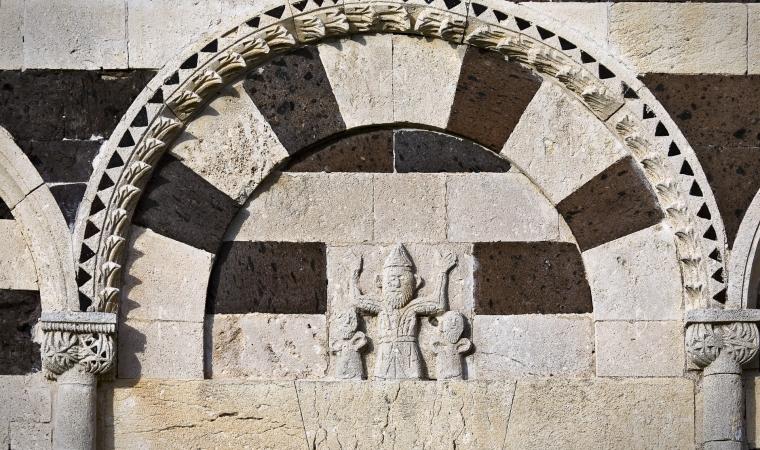One of the most fascinating examples of a Romanesque country church on the Island, characterised by its two-tone elegance, with traces of centuries-old devotion engraved into its ashlars. The church of Santa Maria Maddalena stands a few kilometres west of Chiaramonti, in the open countryside. Its origins are documented: in 1205 the title deed was donated by a noblewoman of the Judicate of Torres to the Camaldolese monks, with the aim of establishing a monastery. The sanctuary was probably also the parish church of the once-flourishing medieval village of Orrìa Pithinna, which has now disappeared. The construction was completed between 1323 and 1335 – as indicated by inscriptions inside and on the façade – when the church hall was extended and the side chapels were built, transforming the layout from longitudinal to a T-shaped cross with a transept.
On the outside, the use of different materials, namely red trachyte and white sandstone, immediately stands out, giving the church the two-tone appearance typical of many Romanesque sanctuaries in northern Sardinia. The façade is simple, decorated with nine small arches that follow the line of the roof slopes and continue along the sides. Above the portal, there is a cross-shaped window. Other single-lancet windows open up on the sides, on the east wall of the arms of the transept and in the apse. The inscription on the façade, in Gothic characters, mentions the author of the works achieved in 1335 and the prior who was in charge at the time. Speaking of inscriptions, you will be intrigued by the blocked-in entrance of the southern arm: an epigraph appears in a block of sandstone used as a jamb, making reference to the tomb of a saint called Autedus, which some people think is kept inside the church. The identification of this figure remains shrouded in mystery: the name does not seem to appear in any hagiographic source. Other ashlars contain graffiti and ‘pilgrim’s tracks’, meaning signs left over the centuries by worshippers who went on a pilgrimage to the sanctuary. The church hall has a single nave with a barrel vault and, among the furnishings, you will see the simulacrum of the saint to whom it is dedicated, preserved in a display case behind the altar.
Chiaramonti is one of the Borghi Autentici d’Italia (Authentic Villages of Italy). It is ‘watched over’ from above by the ruins of the Doria Castle, a medieval fortress built by the powerful Ligurian family to monitor their estates in Anglona. Its ruins are an enchanting location for shows and concerts: every year, the Musica sulle Bocche festival makes a stop there.

